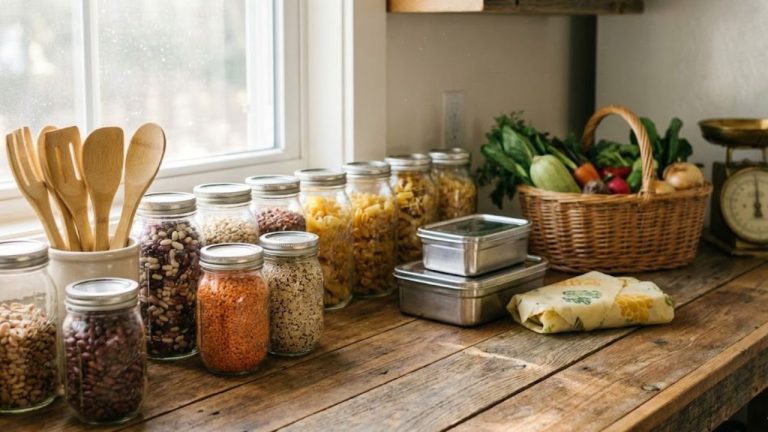Welcome to the world of green insulation techniques, where you can unlock the key to a more sustainable and energy-efficient home. In this article, we will guide you through the benefits of green insulation, the various types of sustainable materials available, and the techniques for installation.
Discover how you can contribute to a greener future while enjoying the comfort and savings that come with environmentally-friendly insulation choices. Let’s embark on this journey together and create a sense of belonging to a community of conscious homeowners.
Benefits of Green Insulation
Discover the numerous advantages of using green insulation in your home.
By choosing green insulation, you can enjoy significant savings on your energy bills while improving the indoor air quality of your living space.
Green insulation materials are designed to be highly efficient, reducing heat transfer and keeping your home cool in the summer and warm in the winter. This means that your heating and cooling systems won’t have to work as hard, resulting in lower energy consumption and lower utility bills.
Additionally, green insulation is made from natural and renewable materials, reducing the use of harmful chemicals and minimizing environmental impact. This not only benefits your health but also contributes to a more sustainable and eco-friendly home.
Types of Sustainable Insulation
To further enhance the benefits of green insulation in your home, let’s explore the different types of sustainable insulation available.
One option is recycled insulation, which is made from recycled materials such as newspapers, cardboard, or denim. These materials are treated to make them resistant to fire, pests, and mold. Recycled insulation not only reduces waste but also provides excellent thermal insulation.
Another sustainable option is energy-efficient insulation, which is designed to minimize heat transfer and reduce energy consumption. This type of insulation is often made from materials like fiberglass, cellulose, or spray foam. It helps maintain a consistent indoor temperature, reducing the need for heating or cooling.
Eco-Friendly Insulation Materials
When selecting eco-friendly insulation materials for your home, consider the following options:
- Natural Fiber Insulation:
- Made from materials such as cotton, sheep’s wool, and hemp.
- Provides excellent thermal insulation and soundproofing.
- Requires less energy to produce compared to traditional insulation materials.
- Recycled Insulation:
- Made from recycled materials like denim, newspaper, and glass.
- Helps reduce waste and landfill usage.
- Provides effective insulation and is easy to install.
By choosing sustainable insulation options, you not only contribute to a greener environment but also enjoy the benefits of energy-efficient insulation. These materials help reduce heat transfer, keeping your home cooler in summer and warmer in winter. Additionally, they’ve a positive impact on indoor air quality by minimizing the release of harmful chemicals commonly found in conventional insulation.
Make a conscious choice to invest in eco-friendly insulation materials and create a cozy, energy-efficient home that aligns with your values.
Installation Techniques for Green Insulation
To ensure proper installation of green insulation in your home, it’s important to follow these effective techniques.
Firstly, make sure to properly seal any air leaks before installing insulation. This will prevent airflow and maximize the efficiency of your insulation.
Additionally, it’s crucial to choose the right type of insulation for your specific needs. Consider factors such as the climate you live in and the area you want to insulate. This will help you select the most cost-effective options that will provide the best insulation for your home.
Finally, ensure that the insulation is installed correctly, with no gaps or compression. This will guarantee that your insulation is working efficiently and effectively.
Maintaining and Upgrading Green Insulation
Are you wondering how to maintain and upgrade your green insulation for optimal performance? It’s important to regularly check and maintain your insulation to ensure it continues to provide energy efficiency and comfort in your home.
Here are some tips for maintaining and upgrading your green insulation:
- Regularly inspect your insulation for any signs of damage or deterioration, such as gaps, holes, or moisture.
- Seal any air leaks or gaps in your insulation to improve its effectiveness.
- Consider upgrading your existing insulation with energy-efficient options, such as spray foam insulation or cellulose insulation.
- Consult with a professional to determine the best insulation upgrade for your specific needs and budget.
- Monitor your energy consumption after upgrading your insulation to assess the effectiveness and energy savings.
Conclusion
In conclusion, by incorporating green insulation techniques in your home, you can create a sustainable and eco-friendly living environment.
Just like a warm embrace from a loved one, green insulation wraps your home in a protective layer, keeping you cozy and reducing energy consumption.
With the wide variety of eco-friendly insulation materials available and proper installation techniques, you can easily maintain and upgrade your green insulation, ensuring long-lasting comfort and environmental benefits.
Start unlocking the potential of green insulation in your home today.




